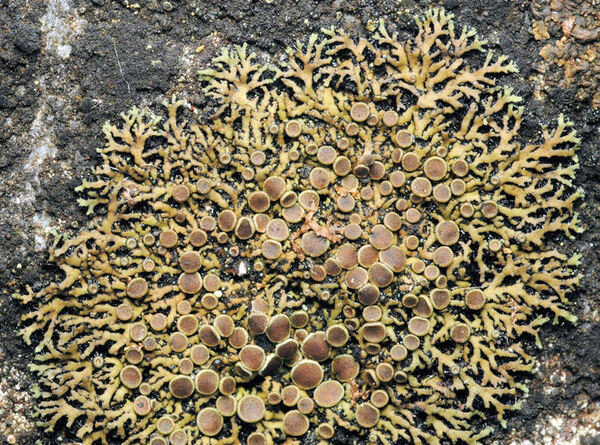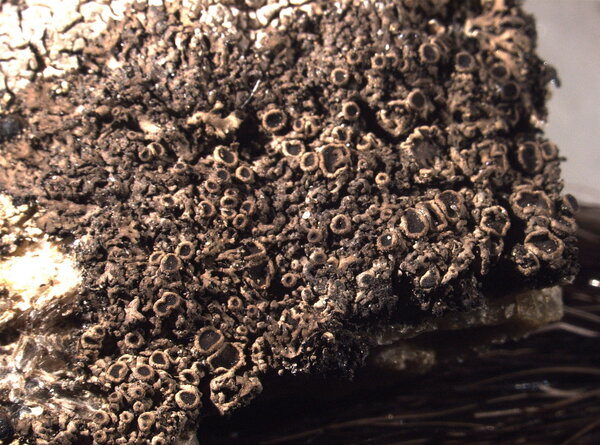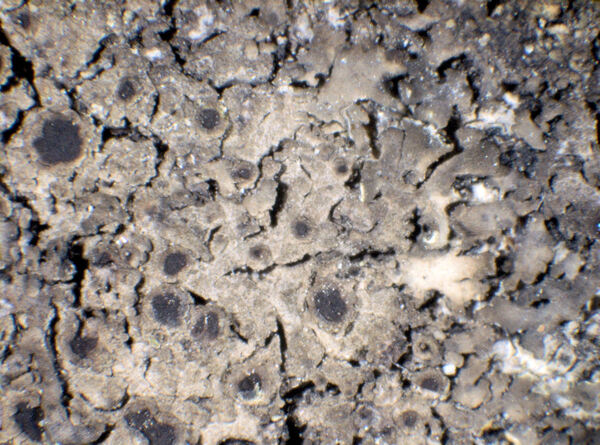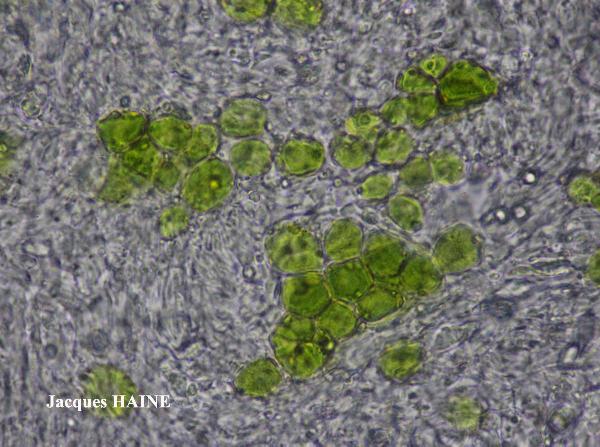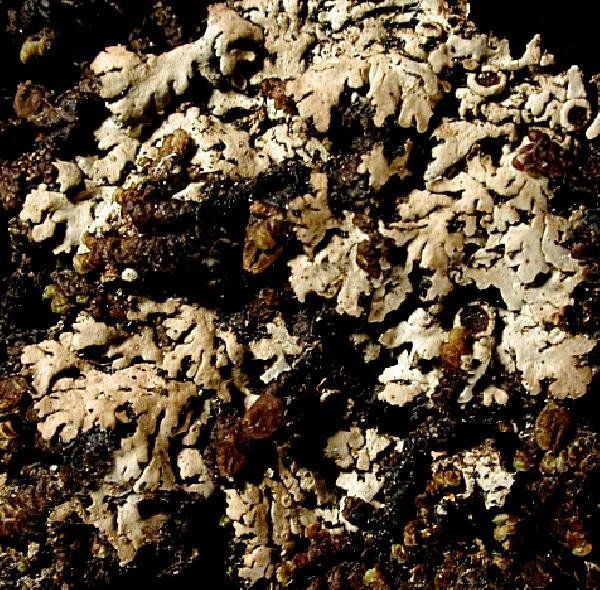Phaeophyscia endococcina (Körb.) Moberg
Symb. Bot. Upsal., 22, 1: 35, 1977. Basionym: Parmelia endococcina Körb. - Parerga Lichenol.: 36, 1859.
Synonyms: Hagenia obscura var. muscicola (Schaer.) Bagl.; Parmelia obscura var. endococcina (Körb.) Anzi; Physcia endochroidea Nyl.; Physcia endococcina (Körb.) Th. Fr.; Physcia lithotodes Nyl.
Distribution: N - Frl (Tretiach & Hafellner 2000), Ven, TAA (Nascimbene & al. 2022), Lomb (Favero-Longo & al. 2023), Piem (Isocrono & al. 2004), VA (Piervittori & Isocrono 1999, Matteucci & al. 2015c), Lig. C - Tosc (Benesperi & al. 2007), Marc (Nimis & Tretiach 1999). S - Cal (Puntillo 1996).
Description: Thallus foliose, heteromerous, dorsiventral, narrow-lobed, closely adnate, forming orbicular to irregular, up to 3 cm wide rosettes. Lobes radiating, 0.3-0.8(-1) mm wide, flat to slightly convex, usually well-separate, the upper surface greyish brown to dark brown when dry, green when wet, epruinose; lower surface black, with dense, concolorous, simple rhizines not projecting beyond margins. Upper and lower cortex paraplectenchymatous; medulla with orange to red pigments, especially in the lower part. Apothecia common, lecanorine, to 1.5 mm across, with a dark disc and an often crenulate or lobulate thalline margin, the lower side usually with a crown of dark rhizines. Epithecium brown; hymenium and hypothecium colourless; paraphyses slender, often forked in upper part, the apical cells clavate, with a thin dark cap. Asci 8-spored, clavate, the K/I+ blue tholus penetrated by a faintly amyloid apical cushion with parallel or diverging flanks, the wall K/I-, surrounded by a K/I+ blue outer layer, Lecanora-type. Ascospores 1-septate, brown, ellipsoid, (16)-18-24(-28) x (7-)9-11(-13) µm, Physcia-type. Pycnidia dark, immersed. Conidia straight, narrowly ellipsoid, 2-5 x 1-1.5 µm. Photobiont chlorococcoid. Spot tests: upper cortex K-, C-, KC-, P-; medulla K+ red in the pigmented parts. Chemistry: medulla with zeorin and skyrin in the pigmented parts. Note: a cool-temperate to circumboreal-montane lichen described from Italy, found near creeks and brooks, but also along seepage tracks in warm-dry Alpine valleys; specimens without the red pigment in the medulla, which are relatively frequent in the Alps, mostly at low elevations, were segregated by Esslinger (1978) into a distinct species, Ph. decolor.
Growth form: Foliose, narrow lobed
Substrata: rocks
Photobiont: green algae other than Trentepohlia
Reproductive strategy: mainly sexual
Commonnes-rarity: (info)
Alpine belt: rather rare
Subalpine belt: rather common
Oromediterranean belt: rare
Montane belt: rare
Submediterranean belt: extremely rare
Padanian area: absent
Humid submediterranean belt: absent
Humid mediterranean belt: absent
Dry mediterranean belt: absent

Predictive model
Herbarium samples


P.L. Nimis; Owner: Department of Life Sciences, University of Trieste
Herbarium: TSB (14069)
2003/03/17
exposed orange medulla
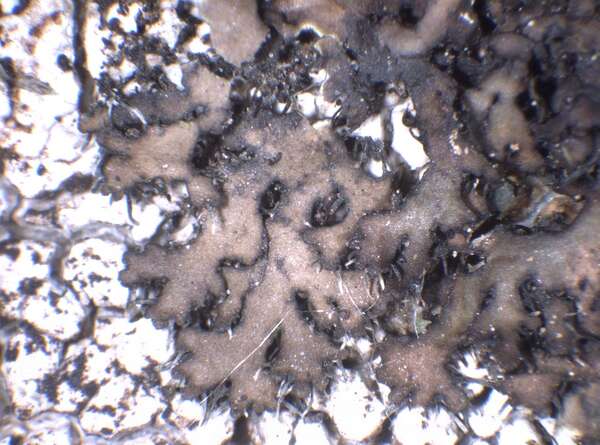

P.L. Nimis; Owner: Department of Life Sciences, University of Trieste
Herbarium: TSB (33337)
2003/03/17
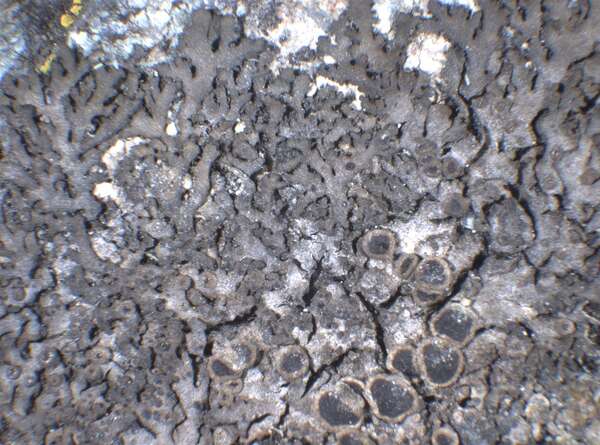

P.L. Nimis; Owner: Department of Life Sciences, University of Trieste
Herbarium: TSB (25160)
2003/03/17
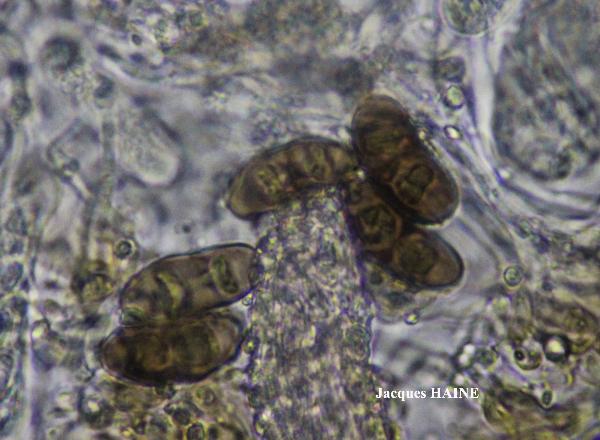
Jacques Haine - Source: http://www.lichensmaritimes.org/index.php?task=fiche&lichen=1092&lang=en
France, Drôme 600 m

Jacques Haine - Source: http://www.lichensmaritimes.org/index.php?task=fiche&lichen=1092&lang=en
France, Drôme 600 m
Growth form: Foliose, narrow lobed
Substrata: rocks
Photobiont: green algae other than Trentepohlia
Reproductive strategy: mainly sexual
Commonnes-rarity: (info)
Alpine belt: rather rare
Subalpine belt: rather common
Oromediterranean belt: rare
Montane belt: rare
Submediterranean belt: extremely rare
Padanian area: absent
Humid submediterranean belt: absent
Humid mediterranean belt: absent
Dry mediterranean belt: absent

Predictive model
| Herbarium samples |


P.L. Nimis; Owner: Department of Life Sciences, University of Trieste
Herbarium: TSB (14069)
2003/03/17
exposed orange medulla


P.L. Nimis; Owner: Department of Life Sciences, University of Trieste
Herbarium: TSB (33337)
2003/03/17


P.L. Nimis; Owner: Department of Life Sciences, University of Trieste
Herbarium: TSB (25160)
2003/03/17

Jacques Haine - Source: http://www.lichensmaritimes.org/index.php?task=fiche&lichen=1092&lang=en
France, Drôme 600 m

 INDEX FUNGORUM
INDEX FUNGORUM
 GBIF
GBIF
 DOLICHENS
DOLICHENS
